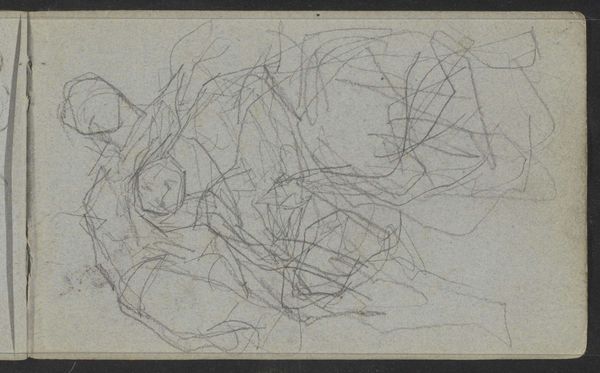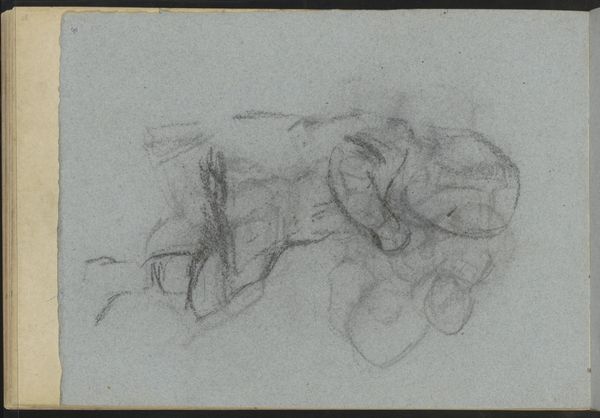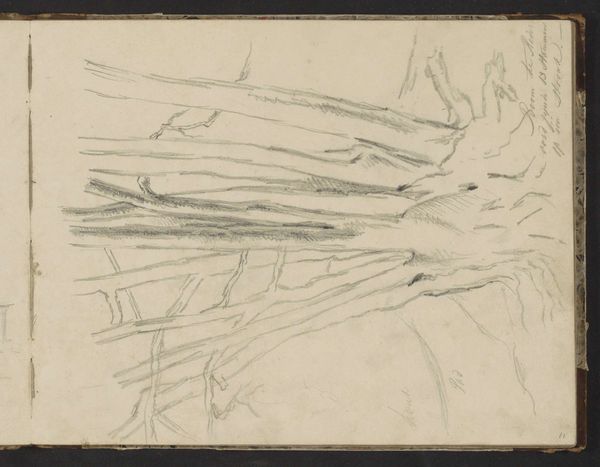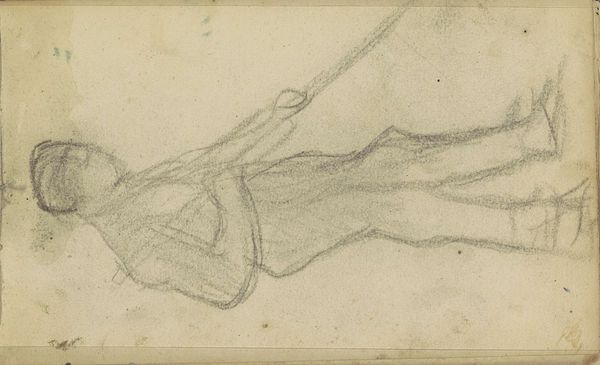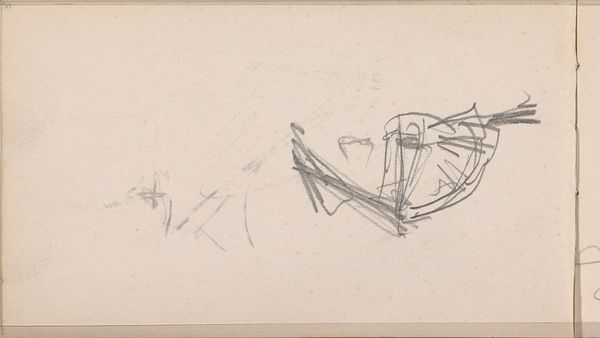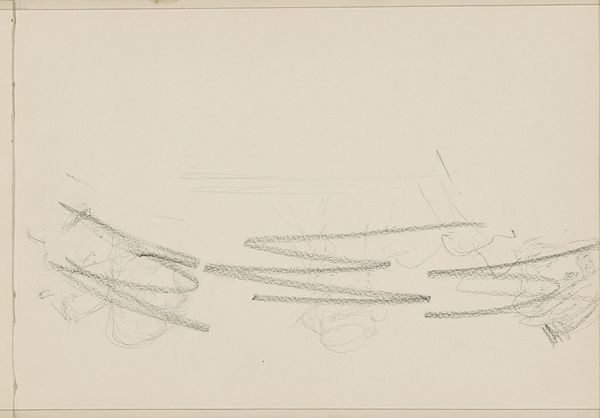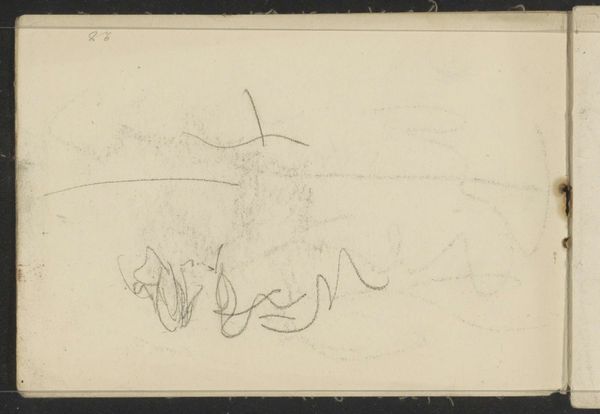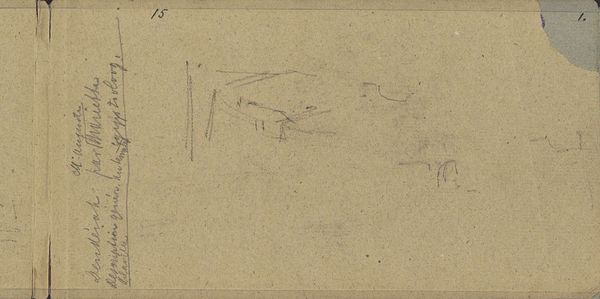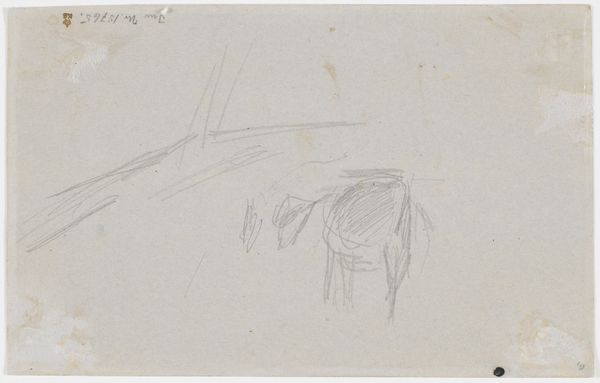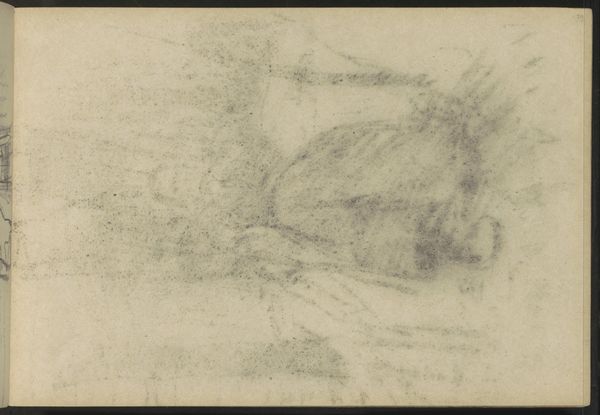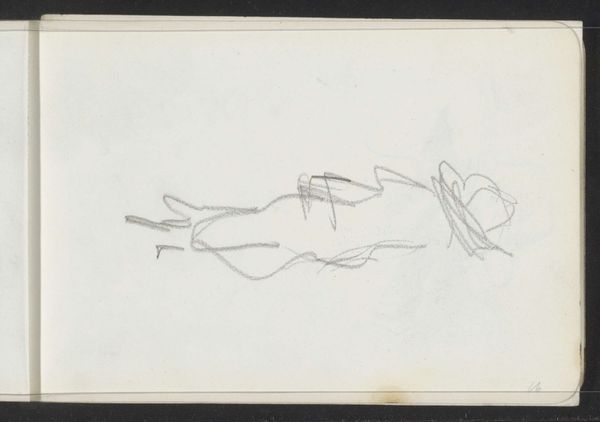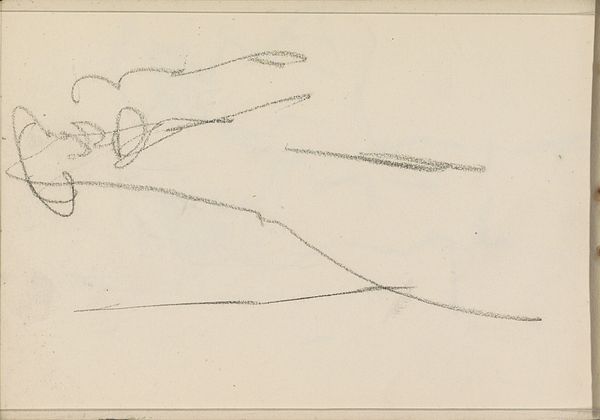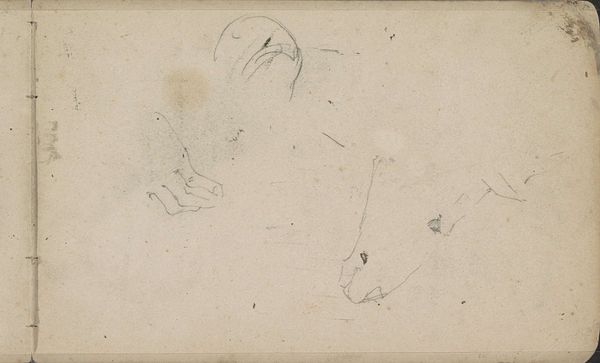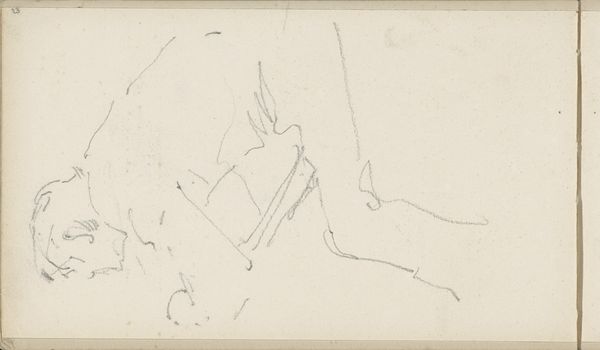
drawing, paper, pencil
#
portrait
#
drawing
#
impressionism
#
figuration
#
paper
#
pencil
#
watercolor
Copyright: Rijks Museum: Open Domain
Curator: Here we have "Zittend Meisje," or "Seated Girl," a drawing by Willem Witsen, created sometime between 1884 and 1887. It's a delicate pencil sketch on paper. Editor: Delicate is the right word! It feels like a whisper of a memory, or maybe a dream half-remembered. The figure almost fades into the paper. Curator: Witsen was part of the Amsterdam Impressionism movement, which explains the emphasis on capturing fleeting moments and subjective impressions. This drawing highlights the everyday life around him, focusing on intimate portraiture, often of friends and family within his social circles. Editor: I love how the artist left the process so visible. You can almost feel the movement of the pencil. Those swift blue lines give such energy and hint at other details like clothes and the furniture where she is seated. Curator: Precisely, it's less about precise representation and more about conveying the sensation of a fleeting moment. We can consider here his milieu—a city rapidly changing due to industrialization, increased commerce, a burgeoning press; all contributing to an understanding of self and place as contingent, never quite set. This approach to portraiture breaks with previous artistic styles which valued detail and sharp resolution in the final picture. Editor: Makes me wonder what she was thinking in that moment. There's a subtle sadness in the slope of her shoulders and tilt of her head, isn't there? I just imagine her waiting for someone, or maybe pondering some unanswerable question about love, loss and what it all means. Or, like, if she remembered to turn off the stove... something completely pedestrian! Curator: That's what I think is great about these types of portraits: we don't just learn about Witsen or his society, but something deeper about the human experience in general. The painting allows the public to question art history’s relationship to portraiture and the political role it plays for society at large. Editor: Definitely! I keep wanting to lean in, imagine how the pencil felt scratching across that page, and wonder about the relationship between Witsen and this sitter, and all of the in-betweens that become history. Curator: Absolutely. There are many historical elements in art to think about and revisit!
Comments
No comments
Be the first to comment and join the conversation on the ultimate creative platform.
